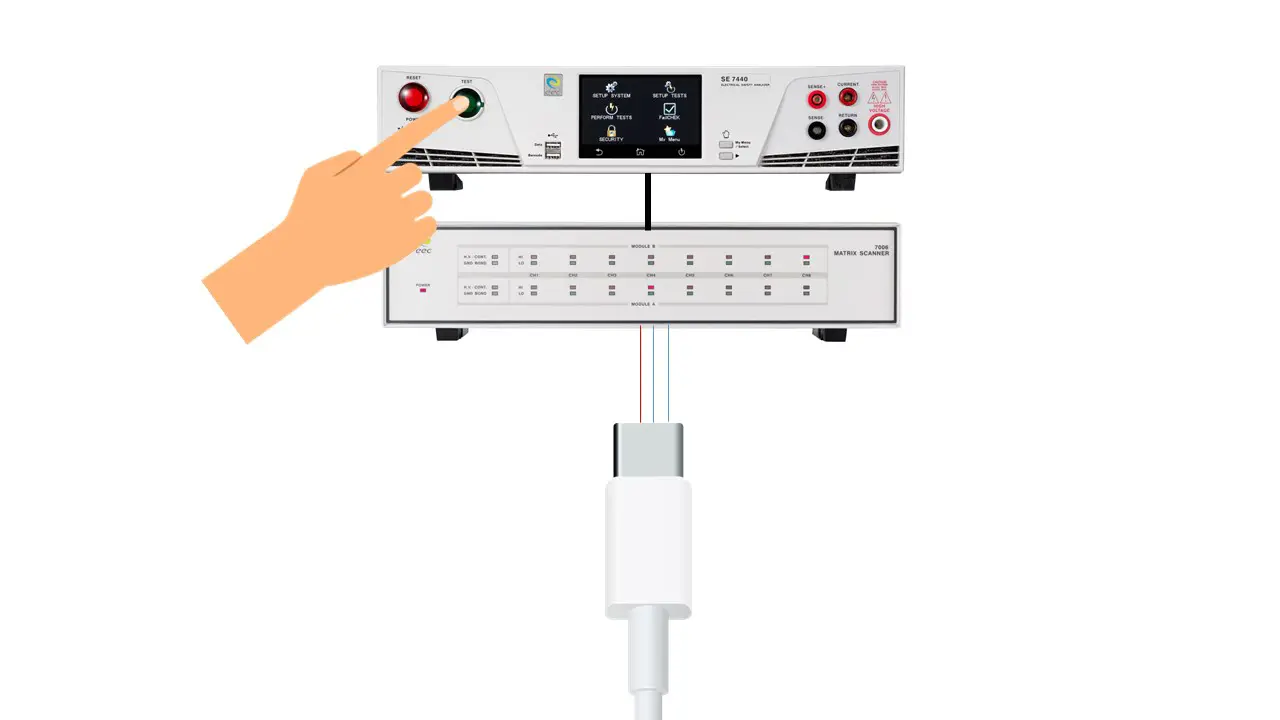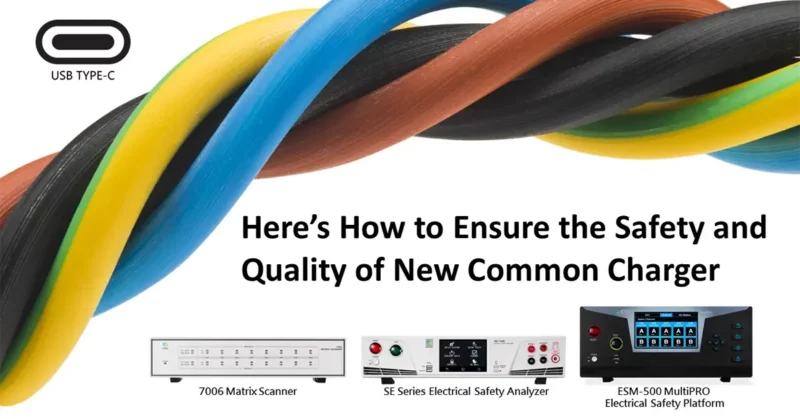To improve the convenience for consumers and reduce e-waste, USB Type-C (USB-C) will become the common charger port for all mobile phones, tablets, and cameras in the EU by autumn 2024. Many governments are also planning to enforce this new rule to move toward environmental sustainability. In addition to being used in portable electronic devices, USB-C cables also are used in high-power devices, such as monitors, electric vehicles, etc. Therefore, to respond to the rapid growth of the USB-C market and more rigorous usage, UL has formulated a series of standards for the safety of USB-C cables. Manufacturers should be familiar with them to prepare for the new era of USB-C. In this issue, we will introduce the USB-C required standards and testing methods.
Quality Cable to Ensure Safety
Along with charging power increases, the safety requirements for charging cables are getting stricter. The UL 9990 (Standard for Safety the Information and Communication Cable) formulates completed requirements of the specification, safety, and performance. Choosing the right material is vital to the safety of the USB-C cable. Therefore, to ensure adopting cable can withstand high voltage, it must meet the following standards: UL 444 Standard for Safety Communication Cable, UL 758 Standard for Safety Appliance Wiring Material, and UL 13 Standard for Safety Power-Limited Circuit Cables.
The above 3 standards require carrying out the Hipot and continuity test in the production line. When conducting the Hipot test, apply the test voltage (refer to table 1) to the conductor and connect the return terminal to the jacket insulation for 2 to 60 seconds. The testing configuration is shown in Figure 1. Before the cable is ready to pack or ship, it must pass the continuity test for the final quality check.
| Standards | UL 444 | UL 758 | UL 13 |
| Test Voltage | Normally apply 2.5kVdc or 1.5kVac | Normally apply 2.5kVdc to 3kVdc | Normally apply 2.5kVdc or 1.5kVac |
| Test time | 2s | 60s | 2s |
Table 1:Cable related standards production line Hipot test voltage list

Figure 1: Configuration of Cable test
The demand and application of USB-C continue to increase. Consumers also place a greater emphasis on their safety. Therefore, when choosing the material, USB-C cable manufacturers put safe and compliance in the first place. To catch the train of a new era, cable manufacturers must maintain their products’ quality while enhancing production capacity. Ikonix provides a high-efficiency solution – the ESM-500 MultiPRO Electrical Safety Platform. The multi-functional module’s design allows you to mix and match your best solution according to your production line needs. The module of ESM-510 (ACW 2 channel module) or ESM-530 (ACW and DCW 2 channel module) meets the cable testing requirement. By paralleling multiple test platforms, up to 100 channels can be synchronized testing. In addition, test results from each channel can be identified independently. It is easy to screen out defective products and improves the test speed and quality. A shorter test duration means higher production output and more profit. MultiPRO‘s unique design enhances both test initialization and step-linkage speed resulting in a 42% reduction in overall testing time. To conduct the continuity test, many customers chose the SE series with an optional continuity test and bundle it with the 7006 Matrix Scanner. The test channel can be expanded quickly and easily and provides up to 80 output channels (1 master with 4 slaves). Our solutions help cable manufacturers improve test efficiency and increase productivity.

USB-C Cable Finished Product Test Requirements
The USB-C port has 24 pins, and each pin has different functions (as shown in Figure 2). To check the design and structure of the finished USB-C cable, it must conduct the required Hipot test and comply with UL 9990. When carrying out the Hipot test, apply 500Vdc between the power bus contacts (A4 and B9 individually or tied together) and the following contacts:
- GND contacts (A1, A12, B1 and B12 individually or tied together)
- Data/signal contacts (A2, A3, A5, A6, A7, A8, A10, A11, B2, B3, B5, B6, B7, B8, B10, and B11 individually or tied together)
- Any non-current-carry metal parts
The test time is 60 seconds to ensure the USB-C cable can withstand the high voltage without breakdown. The production line required the continuity test to check each product was safe and high-quality.

Figure 2: Introduce to USB-C Pins
Many charging cable manufacturers chose the bundle of SE series and 7006 matrix scanners to implement multi-points test functions and solve complex wiring problems. This solution makes the Hipot test between the power pin and other pins easier. It is also suitable for production line tests (SE series need to add an optional continuity test) to conduct the continuity test on multiple charging cables to improve the efficiency of the production line. A total solution with WithStand® can easily control the sup can easily control the Hipot and continuity test.

Ikonix has more than 85 years of industry expertise and experience. We dedicate to the R&D and manufacturing of safety testing instruments and AC power sources and actively cooperate with leading manufacturers and laboratories to provide suitable solutions for various industries. In response to the type C new era, cable and Type-C cable finished product manufacturers must prepare for it. If you have any questions about electrical safety testing, please contact our sales representative immediately.




